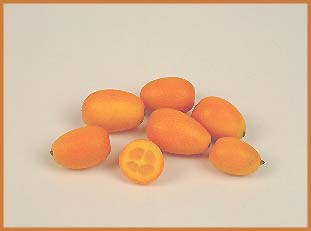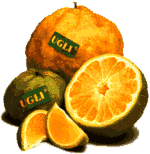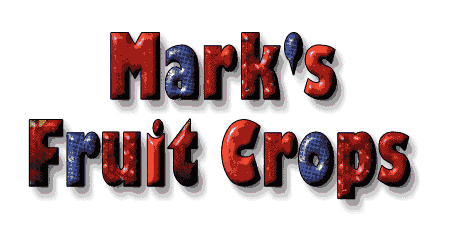You are using an out of date browser. It may not display this or other websites correctly.
You should upgrade or use an alternative browser.
You should upgrade or use an alternative browser.
The NY Post .. arent all Democratic Men???
- Thread starter docmercer--banned
- Start date
bblight said:Bump - I don't know what the moron said - he's on my ignore list - but if it'll move him off of the board, I'm for it,
:ughhh: Let me get this straight. BBight wants Docs posts to fall off of page 1, so ... he bumps them to the top of page one?
Slick one, Corky.
By David L. Fox
Kingdom: Animalia
Phylum: Chordata
Subphylum: Vertebrata
Class: Mammalia
Order: Tubulidentata
Family: Orycteropodidae
Genus: Orycteropus
Species: Orycteropus afer
 Find in TaxonTree [Help]
Find in TaxonTree [Help]
Geographic Range
Aardvarks occur throughout much of sub-Saharan Africa with the exception of the rainforests of the west-central parts of the continent.
Biogeographic Regions:
ethiopian (native
(native
 ).
).
Habitat
Aardvarks occur in a variety of habitats: grassy plains, bushland, woodland, and savanna. The presence of sufficient quantities of ants and termites seems to be the limiting factor.
Terrestrial Biomes:
savanna or grassland ; scrub forest
; scrub forest
 .
.
Physical Description
Mass
<VALUE>40 to 100 kg
(88 to 220 lbs)</VALUE>
Aardvarks have a superficial resemblance to a long snouted pig. The skin is thick, sparsely covered by hairs and varies in color from dull brownish gray to dull yellowish gray. The pinnae of the ears are large (150-210 mm) and can fold back to protect the ears while the aardvark is burrowing. The blunt snout has circular nostrils. The tongue is tapered. The dental formula is usually 0/0 0/0 2/2 3/3 for a total of 20 teeth in the adult. The cheek teeth are composed of numerous hexagonal prisms of dentin, which are perpendicular to the occlusal surface. Each prism is pierced by a tubule that is homologous to the pulp cavity, not the Tomes fibres. This unusual dental structure is the origin for the ordinal and familial names. The cranium is long and relatively low and the mandible is straight and blade-like anteriorly.
Some key physical features:
endothermic ; bilateral symmetry
; bilateral symmetry
 .
.
Reproduction
Aardvarks are thought to be polygamous, in part because only females maintain consistent home ranges. Gestation lasts approximately 7 months and single births are normal, though twinning does occur occasionally. The timing of birth varies across Africa. Neonates weigh between 1.8 and 2 kg and are approximately 550 mm long. Young remain in the burrow for several weeks following birth before venturing out with the mother on nightly foraging trips. Young excavate their own burrows at 6 months old, though they remain in association with the mother until the following mating season. Sexual maturity is attained at 2 years after birth.
Key reproductive features:
gonochoric/gonochoristic/dioecious (sexes separate); sexual .
.
Behavior
Aardvarks are excellent diggers and excavate burrows that are typically 2-3 m long, although they may be much more extensive. In soft earth, an aardvark can dig faster than several humans using shovels. Aardvarks are nocturnal and sleep during the day curled in a tight circle in the burrow. They are solitary and may be territorial. Males and females occupy separate burrows. Within its territory, an aardvark uses the same network of paths over an interval of about a week. While foraging, aardvarks cover a strip of ground about 30 m wide in a zig-zag path with the ears directed forward and the snout close to the ground, emitting snuffling sounds while searching for prey. Aardvarks feed by digging into termite or ant mounds with their powerful forelimbs and lapping up the residents with their sticky tongues, which can be thrust 250-300 mm out of the mouth. An unusual behavior of aardvarks is the burying of feces, which they do regularly in shallow excavations 10cm deep. This may be to avoid detection by other aardvarks.
Key behaviors:
motile .
.
Food Habits
The principal food items are ants and termites, which are gathered with the long, sticky tongue. Other insects are occasionally taken, and predation on mice has been reported. Aardvarks also eat the fruit of a wild cucumber, known as the aardvark pumpkin, apparently as a source of water.
Economic Importance for Humans: Negative
Aardvark burrows can cause damage to farmlands and are a hazard to vehicles and horses.
Economic Importance for Humans: Positive
Aardvarks have long been hunted by Africans as well as European colonists for their flesh, hide and for sport. The meat is said to look like coarse beef and taste like pork. Many aardvark parts are valued as charms or curios. Aardvarks are also important as a control on termites.
Ways that people benefit from these animals:
food ; body parts are source of valuable material; controls pest population.
; body parts are source of valuable material; controls pest population.
Conservation Status
Aardvarks are listed under CITES Appendix II due to a lack of precise information on its status.
Other Comments
Aardvarks are color blind.
Contributors
David L. Fox (author), University of Michigan.
References
Nowak, R. M. 1991. Walker's Mammals of the World. Johns Hopkins University Press, Baltimore.
Shoshani, J, Goldman, C. A. and Thewissen, J. G. M. 1988. Orycteropus afer. Mammalian Species Account No. 300. American Society of Mammalogists, 8 pp.
Knoethig, J. 2005. "Biology of the Aardvark (Orycteropus afer)" (On-line). Accessed February 11, 2006 at <TT>http://www.tierseiten.com/roehrenzaehner/aardvark.pdf</TT>.
<TT>2006/04/23 04:15:44.754 GMT-4</TT> <!-- End content -->
 To cite this page: Fox, D. 1999. "Orycteropus afer" (On-line), Animal Diversity Web. Accessed April 26, 2006 at http://animaldiversity.ummz.umich.edu/site/accounts/information/Orycteropus_afer.html.
To cite this page: Fox, D. 1999. "Orycteropus afer" (On-line), Animal Diversity Web. Accessed April 26, 2006 at http://animaldiversity.ummz.umich.edu/site/accounts/information/Orycteropus_afer.html.
 Disclaimer: The Animal Diversity Web is an educational resource written largely by and for college students. ADW doesn't cover all species in the world, nor does it include all the latest scientific information about organisms we describe. Though we edit our accounts for accuracy, we cannot guarantee all information in those accounts. While ADW staff and contributors provide references to books and websites that we believe are reputable, we cannot necessarily endorse the contents of references beyond our control.
Disclaimer: The Animal Diversity Web is an educational resource written largely by and for college students. ADW doesn't cover all species in the world, nor does it include all the latest scientific information about organisms we describe. Though we edit our accounts for accuracy, we cannot guarantee all information in those accounts. While ADW staff and contributors provide references to books and websites that we believe are reputable, we cannot necessarily endorse the contents of references beyond our control.
 <TABLE class=content cellSpacing=0 cellPadding=0 width=757 summary=layout border=0><TBODY><TR><TD style="FONT-SIZE: 0.85em">Home ¦ About Us ¦ Special Topics ¦ Teaching ¦ About Animal Names ¦ Help </TD><TD><FORM style="MARGIN: 5px 10px 0px" action=http://animaldiversity.ummz.umich.edu/site/search><INPUT size=22 name=SearchableText> <INPUT style="BORDER-TOP-WIDTH: 0px; BORDER-LEFT-WIDTH: 0px; BORDER-BOTTOM-WIDTH: 0px; VERTICAL-ALIGN: middle; BORDER-RIGHT-WIDTH: 0px" type=image src="http://animaldiversity.ummz.umich.edu/site/img/searchButton.jpg" border=0 name=Search> </FORM>Structured Inquiry Search — preview
<TABLE class=content cellSpacing=0 cellPadding=0 width=757 summary=layout border=0><TBODY><TR><TD style="FONT-SIZE: 0.85em">Home ¦ About Us ¦ Special Topics ¦ Teaching ¦ About Animal Names ¦ Help </TD><TD><FORM style="MARGIN: 5px 10px 0px" action=http://animaldiversity.ummz.umich.edu/site/search><INPUT size=22 name=SearchableText> <INPUT style="BORDER-TOP-WIDTH: 0px; BORDER-LEFT-WIDTH: 0px; BORDER-BOTTOM-WIDTH: 0px; VERTICAL-ALIGN: middle; BORDER-RIGHT-WIDTH: 0px" type=image src="http://animaldiversity.ummz.umich.edu/site/img/searchButton.jpg" border=0 name=Search> </FORM>Structured Inquiry Search — preview
</TD></TR></TBODY></TABLE>Report Error — Comment — <!-- survey in -->Help improve this site - take our survey!<!-- survey out --><SCRIPT>bugTrackerLink();</SCRIPT>
Sponsored in part by the Interagency Education Research Initiative, the Homeland Foundation and the University of Michigan Museum of Zoology. The ADW Team gratefully acknowledges their support.
©1995-2006, The Regents of the University of Michigan and its licensors. All rights reserved.


Kingdom: Animalia
Phylum: Chordata
Subphylum: Vertebrata
Class: Mammalia
Order: Tubulidentata
Family: Orycteropodidae
Genus: Orycteropus
Species: Orycteropus afer

Geographic Range
Aardvarks occur throughout much of sub-Saharan Africa with the exception of the rainforests of the west-central parts of the continent.
Biogeographic Regions:
ethiopian
Habitat
Aardvarks occur in a variety of habitats: grassy plains, bushland, woodland, and savanna. The presence of sufficient quantities of ants and termites seems to be the limiting factor.
Terrestrial Biomes:
savanna or grassland
Physical Description
Mass
<VALUE>40 to 100 kg
(88 to 220 lbs)</VALUE>
Aardvarks have a superficial resemblance to a long snouted pig. The skin is thick, sparsely covered by hairs and varies in color from dull brownish gray to dull yellowish gray. The pinnae of the ears are large (150-210 mm) and can fold back to protect the ears while the aardvark is burrowing. The blunt snout has circular nostrils. The tongue is tapered. The dental formula is usually 0/0 0/0 2/2 3/3 for a total of 20 teeth in the adult. The cheek teeth are composed of numerous hexagonal prisms of dentin, which are perpendicular to the occlusal surface. Each prism is pierced by a tubule that is homologous to the pulp cavity, not the Tomes fibres. This unusual dental structure is the origin for the ordinal and familial names. The cranium is long and relatively low and the mandible is straight and blade-like anteriorly.
Some key physical features:
endothermic
Reproduction
Aardvarks are thought to be polygamous, in part because only females maintain consistent home ranges. Gestation lasts approximately 7 months and single births are normal, though twinning does occur occasionally. The timing of birth varies across Africa. Neonates weigh between 1.8 and 2 kg and are approximately 550 mm long. Young remain in the burrow for several weeks following birth before venturing out with the mother on nightly foraging trips. Young excavate their own burrows at 6 months old, though they remain in association with the mother until the following mating season. Sexual maturity is attained at 2 years after birth.
Key reproductive features:
gonochoric/gonochoristic/dioecious (sexes separate); sexual
Behavior
Aardvarks are excellent diggers and excavate burrows that are typically 2-3 m long, although they may be much more extensive. In soft earth, an aardvark can dig faster than several humans using shovels. Aardvarks are nocturnal and sleep during the day curled in a tight circle in the burrow. They are solitary and may be territorial. Males and females occupy separate burrows. Within its territory, an aardvark uses the same network of paths over an interval of about a week. While foraging, aardvarks cover a strip of ground about 30 m wide in a zig-zag path with the ears directed forward and the snout close to the ground, emitting snuffling sounds while searching for prey. Aardvarks feed by digging into termite or ant mounds with their powerful forelimbs and lapping up the residents with their sticky tongues, which can be thrust 250-300 mm out of the mouth. An unusual behavior of aardvarks is the burying of feces, which they do regularly in shallow excavations 10cm deep. This may be to avoid detection by other aardvarks.
Key behaviors:
motile
Food Habits
The principal food items are ants and termites, which are gathered with the long, sticky tongue. Other insects are occasionally taken, and predation on mice has been reported. Aardvarks also eat the fruit of a wild cucumber, known as the aardvark pumpkin, apparently as a source of water.
Economic Importance for Humans: Negative
Aardvark burrows can cause damage to farmlands and are a hazard to vehicles and horses.
Economic Importance for Humans: Positive
Aardvarks have long been hunted by Africans as well as European colonists for their flesh, hide and for sport. The meat is said to look like coarse beef and taste like pork. Many aardvark parts are valued as charms or curios. Aardvarks are also important as a control on termites.
Ways that people benefit from these animals:
food
Conservation Status
Aardvarks are listed under CITES Appendix II due to a lack of precise information on its status.
Other Comments
Aardvarks are color blind.
Contributors
David L. Fox (author), University of Michigan.
References
Nowak, R. M. 1991. Walker's Mammals of the World. Johns Hopkins University Press, Baltimore.
Shoshani, J, Goldman, C. A. and Thewissen, J. G. M. 1988. Orycteropus afer. Mammalian Species Account No. 300. American Society of Mammalogists, 8 pp.
Knoethig, J. 2005. "Biology of the Aardvark (Orycteropus afer)" (On-line). Accessed February 11, 2006 at <TT>http://www.tierseiten.com/roehrenzaehner/aardvark.pdf</TT>.
<TT>2006/04/23 04:15:44.754 GMT-4</TT> <!-- End content -->



</TD></TR></TBODY></TABLE>Report Error — Comment — <!-- survey in -->Help improve this site - take our survey!<!-- survey out --><SCRIPT>bugTrackerLink();</SCRIPT>
Sponsored in part by the Interagency Education Research Initiative, the Homeland Foundation and the University of Michigan Museum of Zoology. The ADW Team gratefully acknowledges their support.
©1995-2006, The Regents of the University of Michigan and its licensors. All rights reserved.


<TABLE cols=2 width="100%"><TBODY><TR><TD><HR width=464></TD></TR><TR><TD vAlign=top align=left><!-- BEGIN RICH-MEDIA BURST! CODE --><SCRIPT language=JavaScript><!--ShowBurstAd('sk6707a','160','600','120x600A|160x600A','0', '9CCCFC', '');// --></SCRIPT><IFRAME id=BURST marginWidth=0 marginHeight=0 src="http://www.burstnet.com/cgi-bin/ads/sk6707a.cgi/NI/if/v=1.1J/zg9CCCFC/sz=120x600A|160x600A/1396/RETURN-CODE" frameBorder=0 width=160 scrolling=no height=600>
 </IFRAME><NOSCRIPT>
</IFRAME><NOSCRIPT>
 </NOSCRIPT><!-- END BURST CODE -->
</NOSCRIPT><!-- END BURST CODE -->
</TD><TD>[SIZE=-1]Sweet Orange[/SIZE]
[SIZE=-1]Citrus sinenis[/SIZE]
[SIZE=-1]Family: Rutaceae[/SIZE]
[SIZE=-1]Clementine, Mandarin, Tangerine, Satsuma[/SIZE]
[SIZE=-1]Citrus reticulata,[/SIZE]
[SIZE=-1]Family: Rutaceae[/SIZE]
[SIZE=-1]Description & storage[/SIZE]
[SIZE=-1]Orange: Round thick skinned juicy edible fruit that is a reddish-yellow color when ripe.[/SIZE]
[SIZE=-1]Mandarin types: type of small orange with loose skin.[/SIZE]
[SIZE=-1]Store them at 12 degrees Celcius (=57o F) or if you like in the refrigerator. This is nice when you use them for squeezing.[/SIZE]
[SIZE=-1]Tree[/SIZE]
[SIZE=-1]Orange trees are evergreen trees. They grow 8 to 15 m. high.[/SIZE]
[SIZE=-1]The mandarin tree grows up to 7,5 m. high.[/SIZE]
[SIZE=-1]The kumquat plant is a shrub that grows up to 4m. high.[/SIZE]
[SIZE=-1]Sweety: see grapefruits.[/SIZE]
[SIZE=-1]Short history[/SIZE]
[SIZE=-1]The orange is cultivated over thousands of years now. It is supposed to originate from South- and indo-China.[/SIZE]
[SIZE=-1]The clergyman Pierre Clement crossed a mandarin and an orange and this luckily crossing[/SIZE]
[SIZE=-1]was a seedless mandarin with a looser skin thus easier to peel: the clementine. (beginning of the 20th century).[/SIZE]
[SIZE=-1]The satsuma is a special crossing from Japan. [/SIZE]
[SIZE=-1]Use[/SIZE]
[SIZE=-1]Oranges are eaten by hand and squeezed a lot.[/SIZE]
[SIZE=-1]Mandarins are eaten by hand and can be used to squeeze as well. A great sweetner for grapefruit juice.[/SIZE]
[SIZE=-1]Kumquats are eaten raw withe the edible skin,[/SIZE]
[SIZE=-1]Types and family[/SIZE]
[SIZE=-1]Clementines: the clementine is a seedless mandarin.[/SIZE]
[SIZE=-1]Kumquats: the kumquat is like a citrus fruit and has an edible skin. It is the most well known of the sort fortunella which is closely related to Citrus.[/SIZE]
[SIZE=-1]Mandarins: type of small orange with loose skin. The mandarin got its name because it was exploited by high-ranking government officials in China (mandarins).[/SIZE]
[SIZE=-1]Minneolas: are a crossing between a tangerine and a grapefruit and can be recognized by [/SIZE]
[SIZE=-1]"the little nose". Can be peeled manually. Is a type of Tangelo, a minneola is a specifically marketed tangelo.[/SIZE]
[SIZE=-1]Oranges: There are different types of oranges: navel oranges, Valencia oranges and blood oranges are the most cultivated races.[/SIZE]
[SIZE=-1]Tangelos: a tangelo is a crossing between a tangerine, a grapefruit and an orange. A specific kind of tangelo is the Ugli which is described further on this page.[/SIZE]
[SIZE=-1]Satsuma:is a very special seedling from Japan. Its skin is a bit tighter than the clementine and it doesn't have seeds as well.[/SIZE]
[SIZE=-1]Tangerines: a tangerine is an orange-red mandarin with a particular citrus taste. Can be peeled manually.[/SIZE]
[SIZE=-1]Uglis: a specific kind of tangelo, easier to peel. A crossing between a tangerine, a grapefruit and an orange. Looks really ugli and sometimes has brown spots. Can be peeled manually.[/SIZE]
[SIZE=-1]Other peculiar characteristics[/SIZE]
[SIZE=-1]The calcium in fortified orange juice is better absorbed than the calcium in milk. A glass of milk (8 ounces) has 291 mg of calcium; of which 93 mg is absorbed (31%). Fortified orange juice (8 ounces) has 350 mg of calcium; of which 130 mg. is absorbed (37%). [/SIZE]
[SIZE=-1]One orange contains about 50 mg. vitamin C; this is about 2/3 of our daily need;[/SIZE]
[SIZE=-1]Oranges are an acid and therefore a detoxifying fruit;[/SIZE]
[SIZE=-1]Bitteroranges can't be eaten raw and are used to make marmalades;[/SIZE]
[SIZE=-1]Citrus fruit is never colored artificially.[/SIZE]
[SIZE=-1]The orange colors orange under the influence of cold temperatures. In the tropics the fruit keeps a green to green with yellow stains color.[/SIZE]
[SIZE=-1]Nutrition Facts[/SIZE]
[SIZE=-1]Selection[/SIZE]
[SIZE=-1]Recipes[/SIZE]
[SIZE=-1]Acidity[/SIZE]
<CENTER>
 |
|
 |
|
 </CENTER>
</CENTER>
</TD></TR></TBODY></TABLE><TABLE cols=4 width="100%"><TBODY><TR><TD width=200></TD><TD>[SIZE=-1]Recommended links[/SIZE]</TD><TD></TD><TD></TD></TR><TR><TD></TD><TD vAlign=top align=left>[SIZE=-1]For information about the different types of oranges from Florida:[/SIZE]</TD><TD vAlign=top align=left>[SIZE=-1]Information about the different cultivars and harvest of citrus fruit.[/SIZE]</TD><TD vAlign=top align=left>[SIZE=-1]All the information about uglis can be found at the web site of Cabel Hall Citrus Ltd., the inventor of this typical fruit.[/SIZE]</TD></TR><TR><TD></TD><TD><CENTER> </CENTER></TD><TD><CENTER>
</CENTER></TD><TD><CENTER>
 </CENTER></TD><TD vAlign=center align=middle>
</CENTER></TD><TD vAlign=center align=middle>
 </TD></TR></TBODY></TABLE><TABLE cols=2 width="100%"><TBODY><TR><TD width=200><HR align=left width=130></TD><TD><HR width="95%"></TD></TR><TR><TD></TD><TD><CENTER>[SIZE=-1]Home - The different types of fruit - Citrus fruit[/SIZE]</CENTER><CENTER>[SIZE=-1]Grapefruits & family - Limes/Lemons[/SIZE]</CENTER></TD></TR><TR><TD width=200></TD><TD><HR width="80%"></TD></TR></TBODY></TABLE><TABLE cols=2 width="100%"><TBODY><TR><TD vAlign=center align=left width=200></TD><TD><SCRIPT language=javascript>var home="http://www.thefruitpages.com";</SCRIPT><CENTER>[SIZE=-1]Join the newsletter[/SIZE]</CENTER></TD></TR></TBODY></TABLE>
</TD></TR></TBODY></TABLE><TABLE cols=2 width="100%"><TBODY><TR><TD width=200><HR align=left width=130></TD><TD><HR width="95%"></TD></TR><TR><TD></TD><TD><CENTER>[SIZE=-1]Home - The different types of fruit - Citrus fruit[/SIZE]</CENTER><CENTER>[SIZE=-1]Grapefruits & family - Limes/Lemons[/SIZE]</CENTER></TD></TR><TR><TD width=200></TD><TD><HR width="80%"></TD></TR></TBODY></TABLE><TABLE cols=2 width="100%"><TBODY><TR><TD vAlign=center align=left width=200></TD><TD><SCRIPT language=javascript>var home="http://www.thefruitpages.com";</SCRIPT><CENTER>[SIZE=-1]Join the newsletter[/SIZE]</CENTER></TD></TR></TBODY></TABLE>
</TD><TD>[SIZE=-1]Sweet Orange[/SIZE]
[SIZE=-1]Citrus sinenis[/SIZE]
[SIZE=-1]Family: Rutaceae[/SIZE]
[SIZE=-1]Clementine, Mandarin, Tangerine, Satsuma[/SIZE]
[SIZE=-1]Citrus reticulata,[/SIZE]
[SIZE=-1]Family: Rutaceae[/SIZE]
[SIZE=-1]Description & storage[/SIZE]
[SIZE=-1]Orange: Round thick skinned juicy edible fruit that is a reddish-yellow color when ripe.[/SIZE]
[SIZE=-1]Mandarin types: type of small orange with loose skin.[/SIZE]
[SIZE=-1]Store them at 12 degrees Celcius (=57o F) or if you like in the refrigerator. This is nice when you use them for squeezing.[/SIZE]
[SIZE=-1]Tree[/SIZE]
[SIZE=-1]Orange trees are evergreen trees. They grow 8 to 15 m. high.[/SIZE]
[SIZE=-1]The mandarin tree grows up to 7,5 m. high.[/SIZE]
[SIZE=-1]The kumquat plant is a shrub that grows up to 4m. high.[/SIZE]
[SIZE=-1]Sweety: see grapefruits.[/SIZE]
[SIZE=-1]Short history[/SIZE]
[SIZE=-1]The orange is cultivated over thousands of years now. It is supposed to originate from South- and indo-China.[/SIZE]
[SIZE=-1]The clergyman Pierre Clement crossed a mandarin and an orange and this luckily crossing[/SIZE]
[SIZE=-1]was a seedless mandarin with a looser skin thus easier to peel: the clementine. (beginning of the 20th century).[/SIZE]
[SIZE=-1]The satsuma is a special crossing from Japan. [/SIZE]
[SIZE=-1]Use[/SIZE]
[SIZE=-1]Oranges are eaten by hand and squeezed a lot.[/SIZE]
[SIZE=-1]Mandarins are eaten by hand and can be used to squeeze as well. A great sweetner for grapefruit juice.[/SIZE]
[SIZE=-1]Kumquats are eaten raw withe the edible skin,[/SIZE]
[SIZE=-1]Types and family[/SIZE]
[SIZE=-1]Clementines: the clementine is a seedless mandarin.[/SIZE]
[SIZE=-1]Kumquats: the kumquat is like a citrus fruit and has an edible skin. It is the most well known of the sort fortunella which is closely related to Citrus.[/SIZE]
[SIZE=-1]Mandarins: type of small orange with loose skin. The mandarin got its name because it was exploited by high-ranking government officials in China (mandarins).[/SIZE]
[SIZE=-1]Minneolas: are a crossing between a tangerine and a grapefruit and can be recognized by [/SIZE]
[SIZE=-1]"the little nose". Can be peeled manually. Is a type of Tangelo, a minneola is a specifically marketed tangelo.[/SIZE]
[SIZE=-1]Oranges: There are different types of oranges: navel oranges, Valencia oranges and blood oranges are the most cultivated races.[/SIZE]
[SIZE=-1]Tangelos: a tangelo is a crossing between a tangerine, a grapefruit and an orange. A specific kind of tangelo is the Ugli which is described further on this page.[/SIZE]
[SIZE=-1]Satsuma:is a very special seedling from Japan. Its skin is a bit tighter than the clementine and it doesn't have seeds as well.[/SIZE]
[SIZE=-1]Tangerines: a tangerine is an orange-red mandarin with a particular citrus taste. Can be peeled manually.[/SIZE]
[SIZE=-1]Uglis: a specific kind of tangelo, easier to peel. A crossing between a tangerine, a grapefruit and an orange. Looks really ugli and sometimes has brown spots. Can be peeled manually.[/SIZE]
[SIZE=-1]Other peculiar characteristics[/SIZE]
[SIZE=-1]The calcium in fortified orange juice is better absorbed than the calcium in milk. A glass of milk (8 ounces) has 291 mg of calcium; of which 93 mg is absorbed (31%). Fortified orange juice (8 ounces) has 350 mg of calcium; of which 130 mg. is absorbed (37%). [/SIZE]
[SIZE=-1]One orange contains about 50 mg. vitamin C; this is about 2/3 of our daily need;[/SIZE]
[SIZE=-1]Oranges are an acid and therefore a detoxifying fruit;[/SIZE]
[SIZE=-1]Bitteroranges can't be eaten raw and are used to make marmalades;[/SIZE]
[SIZE=-1]Citrus fruit is never colored artificially.[/SIZE]
[SIZE=-1]The orange colors orange under the influence of cold temperatures. In the tropics the fruit keeps a green to green with yellow stains color.[/SIZE]
[SIZE=-1]Nutrition Facts[/SIZE]
[SIZE=-1]Selection[/SIZE]
[SIZE=-1]Recipes[/SIZE]
[SIZE=-1]Acidity[/SIZE]
<CENTER>



</TD></TR></TBODY></TABLE><TABLE cols=4 width="100%"><TBODY><TR><TD width=200></TD><TD>[SIZE=-1]Recommended links[/SIZE]</TD><TD></TD><TD></TD></TR><TR><TD></TD><TD vAlign=top align=left>[SIZE=-1]For information about the different types of oranges from Florida:[/SIZE]</TD><TD vAlign=top align=left>[SIZE=-1]Information about the different cultivars and harvest of citrus fruit.[/SIZE]</TD><TD vAlign=top align=left>[SIZE=-1]All the information about uglis can be found at the web site of Cabel Hall Citrus Ltd., the inventor of this typical fruit.[/SIZE]</TD></TR><TR><TD></TD><TD><CENTER>
 </CENTER></TD><TD><CENTER>
</CENTER></TD><TD><CENTER>
 </CENTER></TD><TD vAlign=center align=middle>
</CENTER></TD><TD vAlign=center align=middle>
 </TD></TR></TBODY></TABLE><TABLE cols=2 width="100%"><TBODY><TR><TD width=200><HR align=left width=130></TD><TD><HR width="95%"></TD></TR><TR><TD></TD><TD><CENTER>[SIZE=-1]Home - The different types of fruit - Citrus fruit[/SIZE]</CENTER><CENTER>[SIZE=-1]Grapefruits & family - Limes/Lemons[/SIZE]</CENTER></TD></TR><TR><TD width=200></TD><TD><HR width="80%"></TD></TR></TBODY></TABLE><TABLE cols=2 width="100%"><TBODY><TR><TD vAlign=center align=left width=200></TD><TD><SCRIPT language=javascript>var home="http://www.thefruitpages.com";</SCRIPT><CENTER>[SIZE=-1]Join the newsletter[/SIZE]</CENTER></TD></TR></TBODY></TABLE>
</TD></TR></TBODY></TABLE><TABLE cols=2 width="100%"><TBODY><TR><TD width=200><HR align=left width=130></TD><TD><HR width="95%"></TD></TR><TR><TD></TD><TD><CENTER>[SIZE=-1]Home - The different types of fruit - Citrus fruit[/SIZE]</CENTER><CENTER>[SIZE=-1]Grapefruits & family - Limes/Lemons[/SIZE]</CENTER></TD></TR><TR><TD width=200></TD><TD><HR width="80%"></TD></TR></TBODY></TABLE><TABLE cols=2 width="100%"><TBODY><TR><TD vAlign=center align=left width=200></TD><TD><SCRIPT language=javascript>var home="http://www.thefruitpages.com";</SCRIPT><CENTER>[SIZE=-1]Join the newsletter[/SIZE]</CENTER></TD></TR></TBODY></TABLE>"PATRIOTESS ... SOME NICE FELLAS ARE HERE JUST TO TALK WITH YOU"

 http://sj.blacksteel.com/images/sj-back.JPG http://sj.blacksteel.com/images/sj-large-medium.jpg http://sj.blacksteel.com/images/sj-sleeve-ends.jpg
http://sj.blacksteel.com/images/sj-back.JPG http://sj.blacksteel.com/images/sj-large-medium.jpg http://sj.blacksteel.com/images/sj-sleeve-ends.jpg
<HR>

 http://sj.blacksteel.com/images/sj-back.JPG http://sj.blacksteel.com/images/sj-large-medium.jpg http://sj.blacksteel.com/images/sj-sleeve-ends.jpg
http://sj.blacksteel.com/images/sj-back.JPG http://sj.blacksteel.com/images/sj-large-medium.jpg http://sj.blacksteel.com/images/sj-sleeve-ends.jpg <HR>
It looks as if Doc will be like those US forces in Iraq, fighting off waves of right wing suicide bombers trying to get him banished to the rubber room.
To the cry of "Bush is Great !" as they launch themselves into Docs threads.
Mohammed Patriot
Mustaffa Basehead
and Osama TheRightWing Goatherder will die and go to paradise, where all the girls look like Ann Coulter and all the boys look like Gannon.
To the cry of "Bush is Great !" as they launch themselves into Docs threads.
Mohammed Patriot
Mustaffa Basehead
and Osama TheRightWing Goatherder will die and go to paradise, where all the girls look like Ann Coulter and all the boys look like Gannon.

 uppy:
uppy: 




